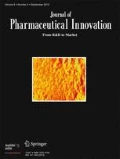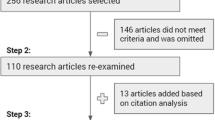Abstract
In April, 2009, the Pharmaceutical Research and Manufacturers of America (PhRMA) Drug Product Technical Group sponsored an industry workshop to explore the practicality and limitations of defining a design space strictly in terms of material attributes rather than process variables. This material-attribute design space would be independent of scale and configuration of process equipment and the associated process variables. For this reason, it would be portable in the sense that post-approval changes of equipment scale, nameplate, or location would not require regulatory approval. This paper summarizes and expands on the output of the workshop. A key concept that underlies this work is that the performance of a drug product is determined by its structure. The control objective of a manufacturing process is to assemble the components of the product into this structure. This is achieved by controlling the attributes of raw materials and process intermediates from each step in the production train within specified ranges, i.e., by operating within a material-attribute design space. In this paper, we explore the development, implementation, and limitations of an attribute-based design space. We show that developing the design space and translating it into process conditions and manufacturing instructions for specific process trains requires the development of thorough process understanding. Thus, this concept is fully consistent with the principles of quality by design. While implementation of the concept developed in this paper is not endorsed by regulatory agencies and would require changes to relevant guidances and regulations, we believe it would provide the quality assurance required by regulators and the operational and process flexibility desired by manufacturers.




Similar content being viewed by others
Notes
An intensive property does not depend on system size or the amount of material present. Examples include tensile strength, viscosity, and density.
References
Conformia CMC-IM Working Group, “Pharmaceutical Development Case Study: ACE Tablets”, March 13, 2008.
PhRMA Drug Product Technical Group Workshop on Attribute-Based Design Space, Rahway, NJ, April 1, 2009.
Polke R, Schafer M. Particle systems characterization as a fundamental element for process design and modeling. Chem Eng Sci. 2002;57:4295–9.
Reynolds G, Ingale R, Roberts R, Kothari S, Gururajan B. Practical application of roller compaction process modeling. Comput Chem Eng. 2010;34(7):1049–57.
Litster JD. Scaleup of wet granulation: science not art. Powder Technol. 2003;130(1–3):35–40.
Sanders CFW, Hounslow MJ, Doyle III FJ. Identification of models for control of wet granulation. Powder Technol. 2009;188(3):255–63.
Michaels JN, Farber L, Wong GS, Hapgood K, Heidel SJ, Farabaugh J, et al. Steady states in granulation of pharmaceutical powders with application to scale-up. Powder Technol. 2009;189(2):295–303.
Doyle III FJ, Soroush M, Cordeiro C. Control of product quality in polymerization processes. AIChE Symp Ser. 2002;326(98):290–306.
Hintz RJ, Johnson KC. The effect of particle-size distribution on dissolution rate and oral adsorption. Int J Pharmaceutics. 1989;51(1):9–17.
Boyle JF, Manas-Zloczower I, Feke DL. Hydrodynamic analysis of the mechanisms of agglomerate dispersion. Powder Technol. 2005;153(2):127–33.
Scurati A, Feke DL, Manas-Zloczower I. Analysis of the kinetics of agglomerate erosion in simple shear flows. Chem Eng Sci. 2005;60(23):6564–73.
Sinka IC, Cunningham JC, Zavaliangos A. Analysis of tablet compaction. II. Finite element analysis of density distributions in convex tablets. J Pharm Sci. 2004;93(8):2040–53.
Procopio AT, Zavaliangos A. Simulation of multi-axial compaction of granular media from loose to high relative densities. J Mech Phys Solids. 2005;53(7):1523–51.
Bika DG, Gentzler M, Michaels JN. Mechanical properties of agglomerates. Powder Technol. 2001;117(1–2):98–112.
Peterson JJ. A Bayesian approach to the ICH Q8 definition of design space. J Biopharm Stat. 2008;18(5):959–75.
Author information
Authors and Affiliations
Corresponding author
Additional information
White Paper sponsored by PhRMA Drug Product Technical Group
Rights and permissions
About this article
Cite this article
Michaels, J.N., Bonsignore, H., Hudson-Curtis, B.L. et al. Attribute-Based Design Space: Materials-Science-Based Quality-By-Design for Operational Flexibility and Process Portability. J Pharm Innov 6, 193–201 (2011). https://doi.org/10.1007/s12247-011-9113-7
Published:
Issue Date:
DOI: https://doi.org/10.1007/s12247-011-9113-7




